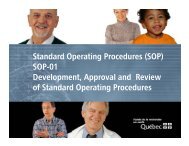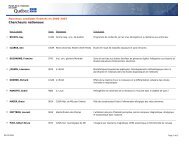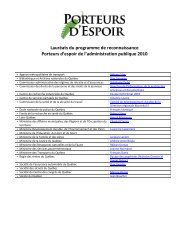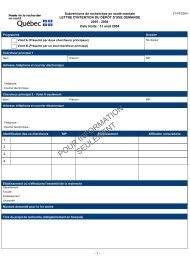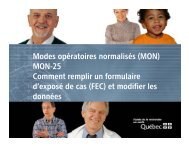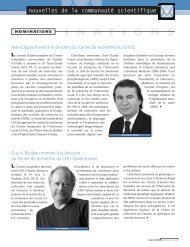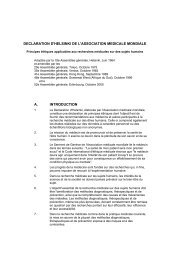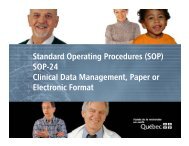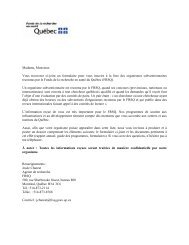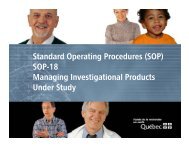Standard Operating Procedures - SOP-17 - FRSQ
Standard Operating Procedures - SOP-17 - FRSQ
Standard Operating Procedures - SOP-17 - FRSQ
- No tags were found...
You also want an ePaper? Increase the reach of your titles
YUMPU automatically turns print PDFs into web optimized ePapers that Google loves.
<strong>Standard</strong> <strong>Operating</strong> <strong>Procedures</strong> (<strong>SOP</strong>)<strong>SOP</strong>-<strong>17</strong>Management of Adverse Events –Serious Adverse Events and AdverseReactions – Serious Adverse Reaction
<strong>SOP</strong>-<strong>17</strong>Management of Adverse Events – Serious Adverse Events and AdverseReactions – Serious Adverse Reactions• Objectives– Describes methods of collection, documentation, investigationand assessment, as well as submission and follow-up, ofAE/SAEs or AR/SARs which occur in the course of a clinicalstudy with or without drugs or medical devices.– Defines AE/SAEs or AR/SARs, the responsibilities of thesponsor-investigator and investigator/qualified investigator, aswell as deadlines for reporting these AE/SAEs or AR/SARs.
<strong>SOP</strong>-<strong>17</strong>Management of Adverse Events – Serious Adverse Events and AdverseReactions – Serious Adverse Reactions• Collection of Clinical Data related to AE/SAEs or AR/SARs– Subject is responsible to report all physical changes– Research personnel should :• Discuss the causality of the AE or AR with theinvestigator/qualified investigator– Clinical event :• Report to the investigator/qualified investigator worseningor deterioration or laboratory abnormalities
<strong>SOP</strong>-<strong>17</strong>Management of Adverse Events – Serious Adverse Events and AdverseReactions – Serious Adverse Reactions• Assessment of AE/SAE or AR/SAR– The investigator/qualified investigator will clinically assess :• Intensity• Severity• Incidence• Causality
<strong>SOP</strong>-<strong>17</strong>Management of Adverse Events – Serious Adverse Events and AdverseReactions – Serious Adverse Reactions• Report and Follow-up of AE/SAEs and AR/SARs– The investigator/qualified investigator is responsible for :• Reporting AE/SAEs or AR/SARs in source documents• Submitting the SAE/SARs to the sponsor/sponsorinvestigator• Submitting to the Ethics Committee all initial and follow-upreports on SAE/SARs
<strong>SOP</strong>-<strong>17</strong>Management of Adverse Events – Serious Adverse Events and AdverseReactions – Serious Adverse Reactions• Report and Follow-up of AE/SAEs and AR/SARs– Fatal and life-threatening SAE/SARs• Case involving medication : within 7 days• The sponsor/sponsor-investigator should :– Provide a report of the SAE/SAR, within 8 days toHealth Canada;• Case involving medical device : within 10 days• The sponsor/sponsor-investigator should :– Submit a summary report according the Minister'srequest (Health Canada)
<strong>SOP</strong>-<strong>17</strong>Management of Adverse Events – Serious Adverse Events and AdverseReactions – Serious Adverse Reactions• Report and Follow-up of AE/SAEs and AR/SARs– Non-fatal SAE/SARs• Case involving medication : within 15 days• Case involving medical device : within 30 days• The sponsor/sponsor-investigator should :– Submit a summary report according the Minister'srequest (Health Canada)– If a protocol is subject to foreign regulations, these should bescrupulously observed
<strong>SOP</strong>-<strong>17</strong>Management of Adverse Events – Serious Adverse Events and AdverseReactions – Serious Adverse ReactionsQuestions ?




